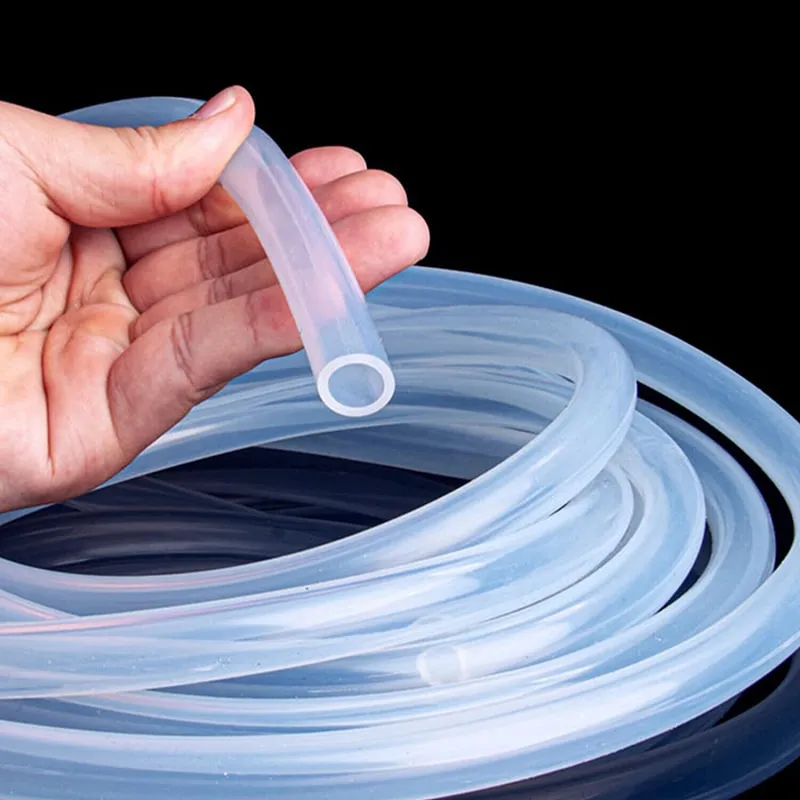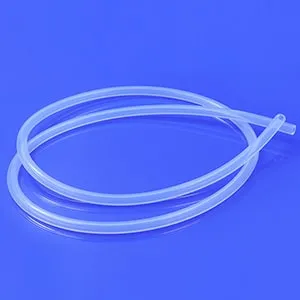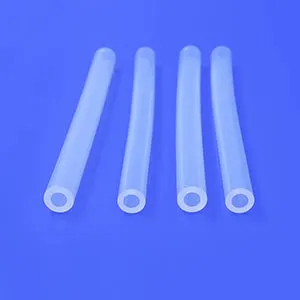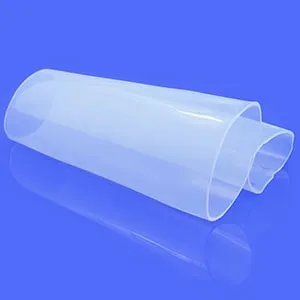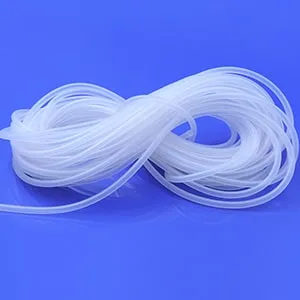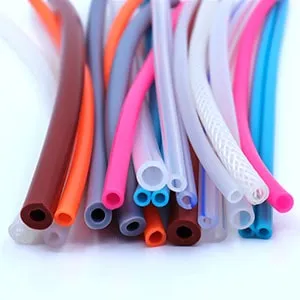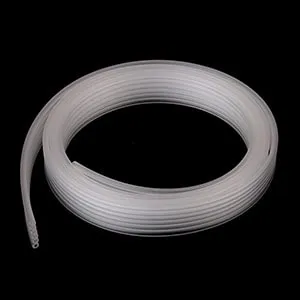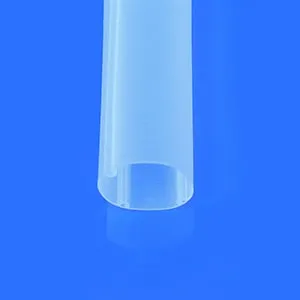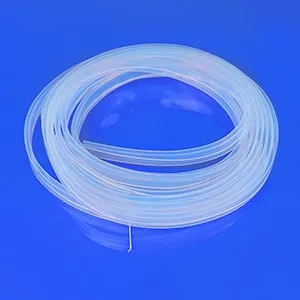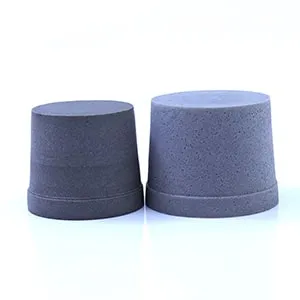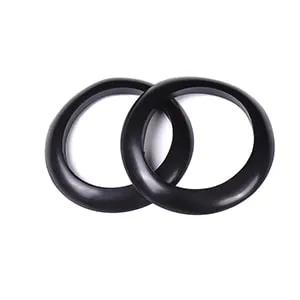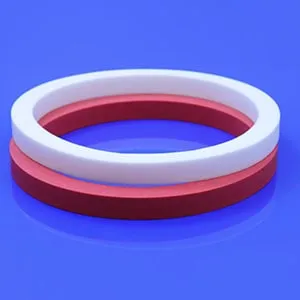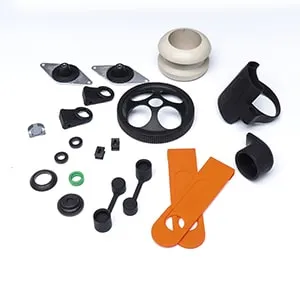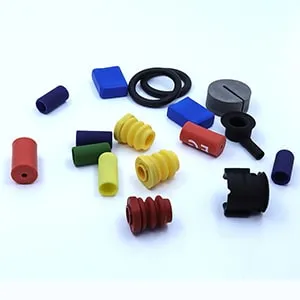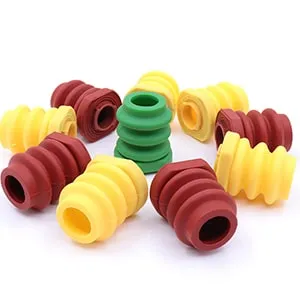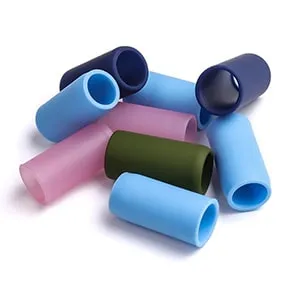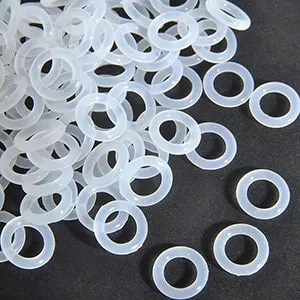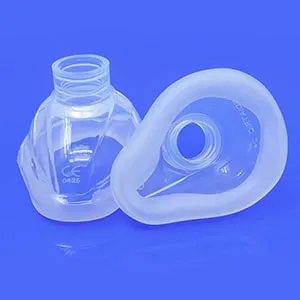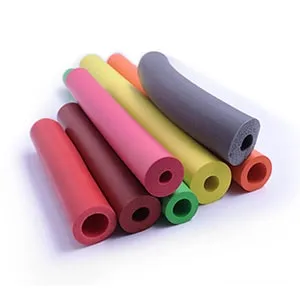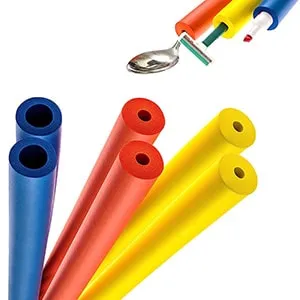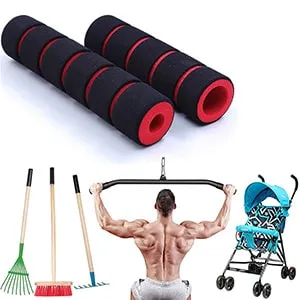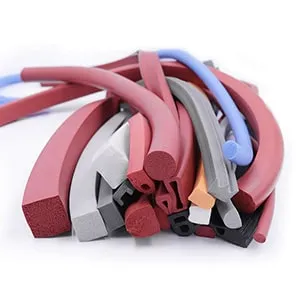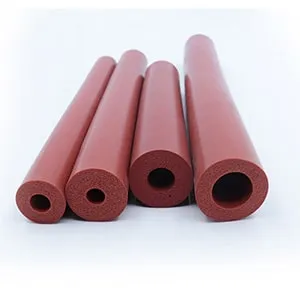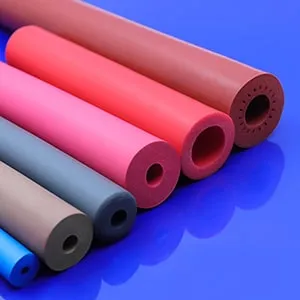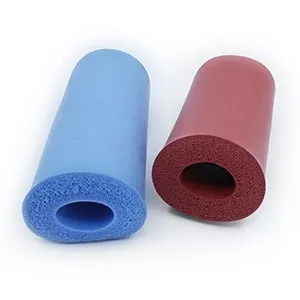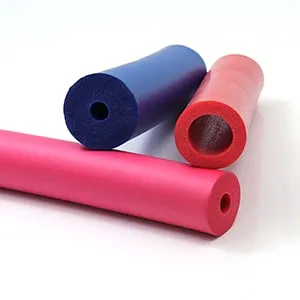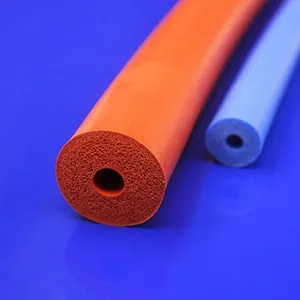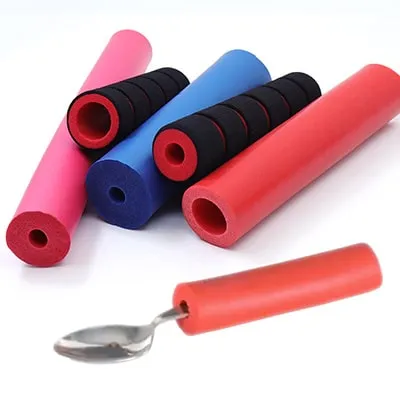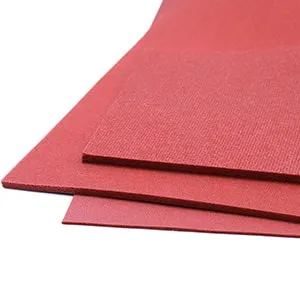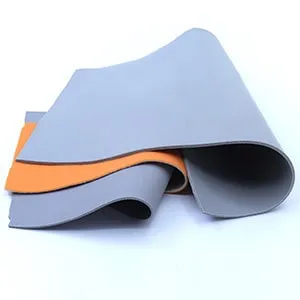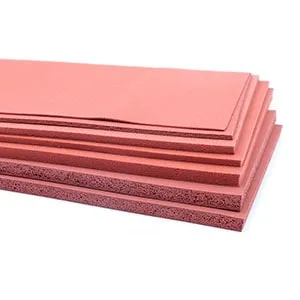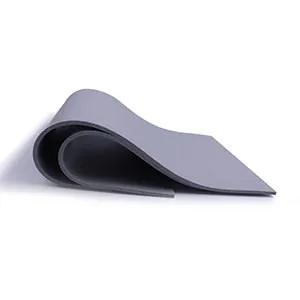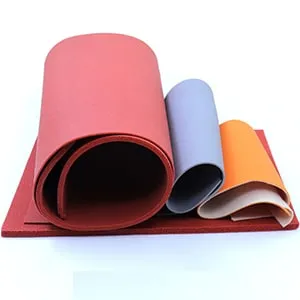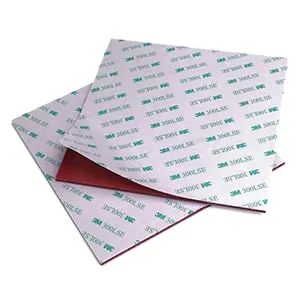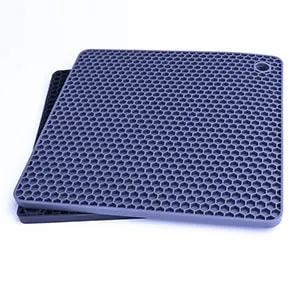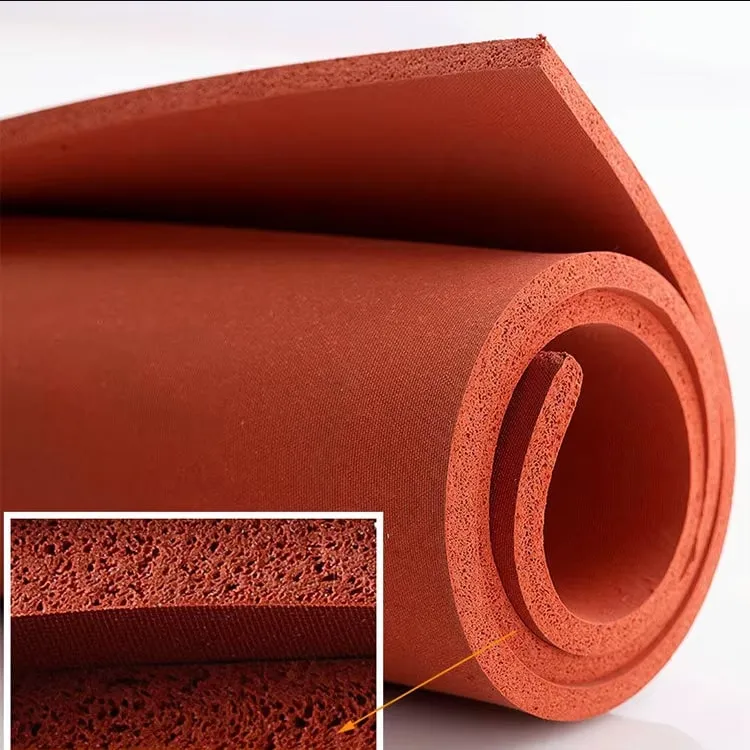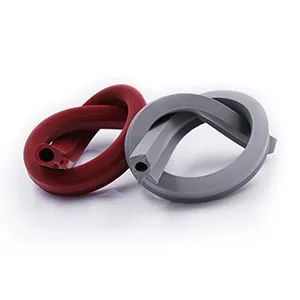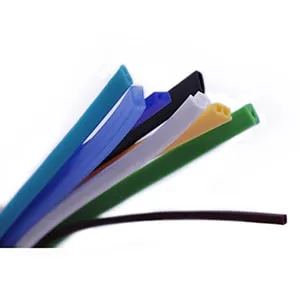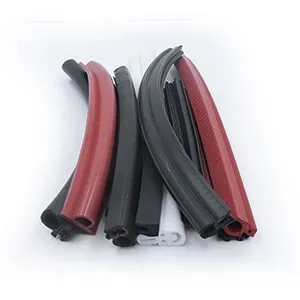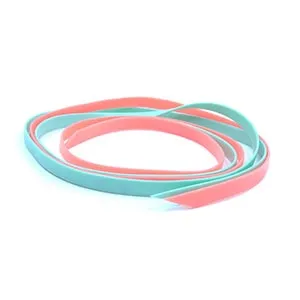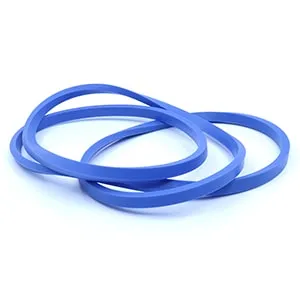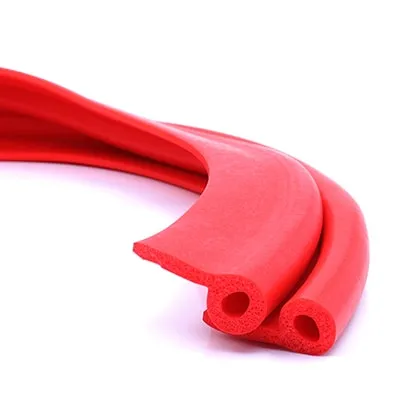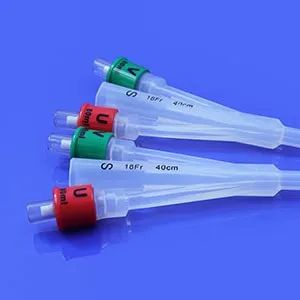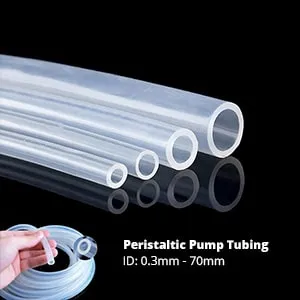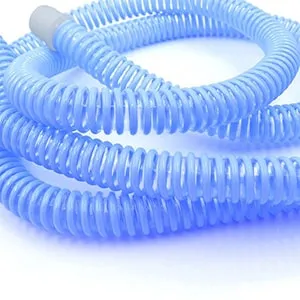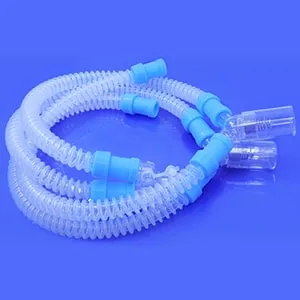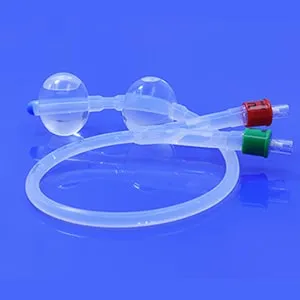Thin Wall Silicone Tubing VS. Traditional Tubing
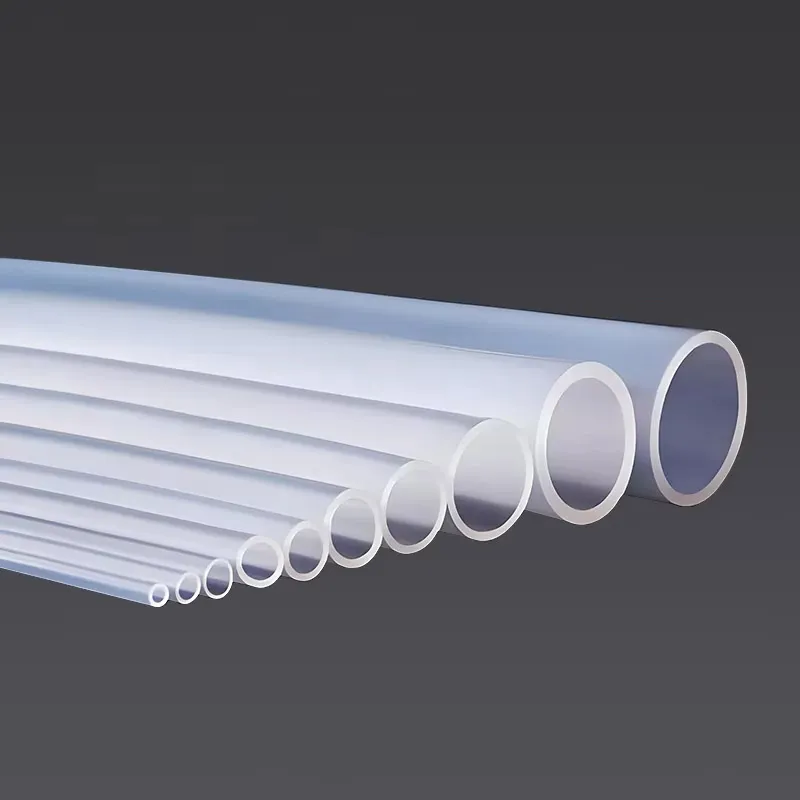
Choosing the right tubing for industrial applications requires understanding the distinct advantages of each option. Thin wall silicone tubing stands out for its flexibility, lightweight design, and resistance to extreme temperatures, ranging from -40ºC to 250ºC. It also offers exceptional chemical compatibility and durability, making it ideal for demanding environments. In contrast, traditional tubing often prioritizes cost-effectiveness and strength, catering to heavy-duty applications. By evaluating these differences, you can ensure optimal performance and longevity in your specific industry.
Key Points
- Thin wall silicone tube offers exceptional flexibility and lightweight design, making it ideal for applications in tight spaces and reducing overall equipment weight.
- With a temperature resistance range of -40ºC to 250ºC, thin wall silicone tubing ensures reliable performance in extreme heat and cold, suitable for various industrial processes.
- The chemical inertness of thin wall silicone tubing guarantees safe fluid transfer, making it a preferred choice in medical, pharmaceutical, and food processing industries.
- Traditional tubing materials like PVC and rubber provide cost-effective solutions for heavy-duty applications, ensuring durability and strength in construction and automotive sectors.
- When selecting tubing, consider the specific demands of your application; thin wall silicone tubing excels in precision-driven fields, while traditional tubing is versatile for general industrial use.
- Customization options for silicone tubing allow for tailored solutions, ensuring it meets specific project requirements in terms of size, thickness, and material grade.
- Understanding the pros and cons of each tubing type helps you make informed decisions, balancing performance needs with budget considerations.
Thin Wall Silicone Tubing: Definition and Properties
What Is Thin Wall Silicone Tubing?
Thin wall silicone tubing is a specialized type of tubing made from high-quality silicone rubber. It features an ultra-thin wall thickness, often as low as 0.25mm, which makes it lightweight and highly flexible. This tubing is designed to perform in demanding environments, offering exceptional durability and resistance to extreme temperatures, chemicals, and environmental factors. Its unique properties make it a preferred choice for industries requiring precision and reliability.
Unlike traditional tubing, thin-wall silicone tubing provides a balance of flexibility and strength. It is non-toxic, odorless, and does not release harmful fumes, ensuring safety in sensitive applications. Manufacturers often customize this tubing to meet specific requirements, such as varying diameters, wall thicknesses, and hardness levels, making it versatile across multiple industries.
Key Properties of Thin Wall Silicone Tubing
Flexibility and Lightweight Design
Ultra thin wall silicone tubing stands out for its remarkable flexibility and lightweight structure. The thin walls allow the tubing to bend and adapt to tight spaces without compromising its integrity. This feature simplifies installation and reduces the overall weight of equipment, making it ideal for applications where space and weight are critical factors.
High Temperature Resistance (-40ºC to 250ºC)
This tubing excels in extreme temperature conditions. It can withstand temperatures as low as -40ºC and as high as 250ºC, maintaining its performance without degradation. This property ensures reliability in both high-heat industrial processes and cold environments, making it suitable for a wide range of applications.
Chemical Inertness and Biocompatibility
Thin wall silicone tubing is chemically inert, meaning it does not react with most chemicals, ensuring safe fluid transfer. Its biocompatibility makes it a trusted choice in medical and pharmaceutical applications. The tubing resists contamination and maintains purity, which is essential for industries that prioritize cleanliness and safety.
Common Applications of Ultra-Thin Wall Silicone Rubber Tube
Medical and Pharmaceutical Uses (e.g., catheters, feeding tubes)
In the medical field, thin wall silicone tubing plays a vital role. Its biocompatibility and sterilizability make it suitable for applications like catheters, feeding tubes, and drainage devices.
Food and Beverage Processing
The food and beverage industry relies on thin wall silicone tubing for transferring liquids without contamination. Its non-toxic and heat-resistant properties ensure safety during food contact.
Electronics and High-Precision Manufacturing
Thin wall silicone tubing is widely used in electronics and high-precision manufacturing. Its insulating properties protect against electrical hazards, while its chemical resistance ensures longevity in harsh environments. This tubing is ideal for conduits of fluids, gases, and electrical wiring in advanced manufacturing processes.
Traditional Tubing: Definition and Properties
What Is Traditional Tubing?
Traditional tubing refers to a broad category of tubing made from materials like PVC, rubber, and metal. These materials have been used for decades in industrial applications due to their durability, strength, and versatility. Unlike thin wall silicone tubing, traditional tubing often prioritizes robustness and cost-effectiveness, making it suitable for heavy-duty tasks.
You will find traditional tubing in industries where high mechanical strength and resistance to wear are essential. Its design focuses on providing reliable performance in demanding environments, such as construction, plumbing, and manufacturing. The wide range of materials available allows you to select tubing tailored to your specific needs.
Common Types of Traditional Tubing
PVC Tubing
PVC tubing is one of the most commonly used types of traditional tubing. It is lightweight, cost-effective, and resistant to corrosion. This tubing works well in applications requiring chemical resistance and flexibility. You will often see PVC tubing in plumbing, irrigation, and low-pressure fluid transfer systems.
Rubber Tubing
Rubber tubing, made from natural or synthetic elastomers, offers excellent stretchability and strength. Silicone rubber, a synthetic elastomer, stands out for its superior benefits, including resistance to UV, ozone, and extreme temperatures. Rubber tubing is ideal for applications requiring flexibility and durability, such as automotive and aerospace industries.
Metal Tubing
Metal tubing provides unmatched strength and durability. It is commonly made from materials like stainless steel, aluminum, or copper. Metal tubing is perfect for high-pressure and high-temperature applications. You will find it in industries like construction, HVAC systems, and heavy machinery, where structural integrity is critical.
Key Properties of Traditional Tubing
Durability and Strength
Traditional tubing excels in durability and strength. Materials like rubber and metal withstand physical stress, abrasion, and harsh environmental conditions. This makes traditional tubing a reliable choice for industries requiring long-lasting performance under demanding circumstances.
Cost-Effectiveness
Traditional tubing often offers a more affordable solution compared to specialized options like thin wall silicone tubing. PVC tubing, for example, provides a budget-friendly option for applications that do not require advanced properties. If cost is a primary concern, traditional tubing can meet your needs without compromising functionality.
Versatility Across Applications
The wide variety of materials used in traditional tubing ensures versatility across numerous industries. Whether you need tubing for fluid transfer, structural support, or insulation, traditional tubing provides options tailored to your requirements. Its adaptability makes it a staple in sectors like construction, automotive, and general manufacturing.
Common Industrial Applications of Traditional Tubing
Construction and Plumbing
In construction and plumbing, traditional tubing plays a vital role. Metal tubing, such as stainless steel or copper, provides unmatched strength and durability. You can rely on it for high-pressure systems, ensuring structural integrity in demanding environments. This makes it ideal for water supply lines, gas pipelines, and HVAC systems.
PVC tubing is another popular choice in this sector. Its lightweight and corrosion-resistant properties make it suitable for irrigation systems and low-pressure fluid transfer. You will find it easy to install and maintain, which reduces labor costs and downtime. For sealing and insulation, rubber tubing offers excellent flexibility and resistance to wear, ensuring long-lasting performance in harsh conditions.
Automotive and Aerospace
The automotive and aerospace industries demand tubing that can withstand extreme conditions. Rubber tubing, particularly silicone rubber, excels in these applications. It resists UV rays, ozone, and extreme temperatures, making it perfect for fuel lines, coolant systems, and air ducts. Its stretchability and strength ensure reliable performance under mechanical stress.
For high-pressure hydraulic systems, metal tubing is the preferred choice. Its ability to handle intense pressure and high temperatures ensures safety and efficiency in critical systems like braking and landing gear. In addition, poly tubing, made from polyethylene, offers a lightweight and durable solution for wiring harnesses and fluid conduits, reducing overall vehicle weight without compromising performance.
General Manufacturing
In general manufacturing, traditional tubing provides versatility across a wide range of applications. Industrial tubing, made from materials like rubber, polymers, and elastomers, meets the diverse needs of this sector. You can use it for chemical transfer, temperature-resistant processes, and low-compression sealing. Its adaptability ensures compatibility with various manufacturing systems.
Silicone tubing is another valuable option in manufacturing. Its flexibility and resistance to extreme temperatures and chemicals make it suitable for transferring fluids and gases in harsh environments. Additionally, its non-reactive and durable nature ensures longevity, even in demanding production lines. For abrasion-resistant needs, silicone rubber flexible tubing offers a reliable solution, maintaining performance under constant wear and tear.
By selecting the right tubing for your specific industrial application, you can enhance efficiency, reduce maintenance, and ensure long-term reliability.
Key Comparisons Between Thin Wall Silicone Tubing and Traditional Tubing
Thin Wall Silicone Tube VS. Traditional Tubing: Flexibility and Weight
Flexibility plays a crucial role in determining how well tubing adapts to specific applications.
Thin-wall silicone tubing offers unmatched flexibility due to its lightweight and ultra-thin design. You can easily bend and maneuver it into tight spaces without risking damage or compromising its structural integrity. This makes it ideal for industries like medical devices and electronics, where precision and adaptability are essential.
Traditional tubing, on the other hand, varies in flexibility depending on the material. PVC tubing provides moderate flexibility, suitable for low-pressure systems. Rubber tubing offers better elasticity, making it useful in automotive and aerospace applications. Metal tubing, while durable, lacks flexibility and is better suited for rigid installations.
When weight is a concern, thin wall silicone tubing outperforms traditional options. Its lightweight nature reduces the overall load on equipment, improving efficiency and ease of handling. Traditional tubing, especially metal, adds significant weight, which may not be suitable for applications requiring mobility or compact designs.
Thin Wall Silicone Tube VS. Traditional Tubing: Durability and Longevity
Durability ensures that tubing withstands wear and tear over time.
Thin wall silicone tubing excels in this area due to its resistance to extreme temperatures, chemicals, and environmental factors. It maintains its performance even in harsh conditions, ensuring long-term reliability. For example, in medical and pharmaceutical settings, its durability ensures safe and consistent fluid transfer.
Traditional tubing offers varying levels of durability based on the material. Metal tubing provides exceptional strength and longevity, making it a staple in construction and plumbing since the introduction of ductile iron pipes in the 1950s. Rubber tubing resists abrasion and mechanical stress, while PVC tubing offers moderate durability at a lower cost. However, traditional materials may degrade faster in environments with extreme temperatures or chemical exposure.
You should consider the specific demands of your application when evaluating durability. Thin wall silicone tubing provides a balance of flexibility and resilience, while traditional tubing offers robust solutions for heavy-duty tasks.
Thin Wall Silicone Tube VS. Traditional Tubing: Temperature Resistance
Temperature resistance determines how well tubing performs under extreme heat or cold.
Thin wall silicone tubing withstands a wide temperature range, from -40ºC to 250ºC. This makes it suitable for high-heat industrial processes and cold storage applications. Its ability to maintain integrity under such conditions ensures consistent performance and safety.
Traditional tubing materials vary in their temperature tolerance. Rubber tubing, particularly silicone rubber, handles moderate temperature extremes, making it useful in automotive and aerospace systems. Metal tubing excels in high-temperature environments, such as HVAC systems and heavy machinery. PVC tubing, however, struggles in extreme heat, limiting its use in high-temperature applications.
Thin Wall Silicone Tube VS. Traditional Tubing: Chemical Compatibility
Chemical compatibility determines how well tubing materials resist reactions with various chemicals.
Thin wall silicone tubing excels in this area due to its chemically inert nature. It does not react with most acids, bases, or solvents, ensuring safe and uncontaminated fluid transfer. This property makes it a reliable choice for industries like pharmaceuticals, food processing, and electronics, where maintaining purity is critical.
Traditional tubing offers varying levels of chemical resistance depending on the material. PVC tubing resists many chemicals but may degrade when exposed to strong solvents or high temperatures. Rubber tubing, particularly silicone rubber, provides moderate chemical resistance and works well in environments with mild acids or alkalis. Metal tubing, such as stainless steel, offers excellent resistance to corrosion and chemical reactions, making it ideal for applications involving aggressive substances.
Thin Wall Silicone Tube VS. Traditional Tubing: Cost and Availability
Cost and availability play a significant role in choosing the right tubing for your application.
Thin wall silicone tubing, with its advanced properties, often comes at a higher price point. Its production involves specialized processes and high-quality materials, which contribute to its cost. However, its durability, flexibility, and performance in extreme conditions justify the investment for industries requiring precision and reliability.
Traditional tubing offers a more cost-effective solution for many applications. PVC tubing, for instance, is widely available and affordable, making it a popular choice for low-pressure systems. Rubber tubing provides a balance of cost and performance, while metal tubing, though more expensive than PVC, delivers unmatched strength and longevity. The development of steel pipes in the early 1800s marked a turning point in industrial applications, offering a durable and versatile option that remains relevant today.
Availability also varies between these options. Thin wall silicone tubing may require customization, which can extend lead times. In contrast, traditional tubing materials like PVC, rubber, and metal are readily available in standard sizes and configurations. This accessibility makes them suitable for projects with tight deadlines or budget constraints.
You should weigh the upfront cost against the long-term benefits when deciding between these options. Thin wall silicone tubing offers superior performance for specialized needs, while traditional tubing provides a practical and economical choice for general applications.
Pros and Cons Between Thin Wall Silicone Tube and Traditional Tubing
Advantages of Thin Wall Silicone Tubing
Exceptional Temperature Resistance
Thin wall silicone tubing performs reliably across a wide temperature range, from -40ºC to 250ºC. This makes it suitable for industries requiring stability in extreme heat or cold environments.
High Flexibility and Lightweight Design
The tubing’s ultra-thin walls provide remarkable flexibility, allowing it to bend and fit into tight spaces without kinking. Its lightweight nature reduces the overall load on equipment, making it ideal for applications where weight is a critical factor.
Chemical Inertness
Silicone tubing resists reactions with most chemicals, ensuring safe and uncontaminated fluid transfer. This property makes it a preferred choice in medical, pharmaceutical, and food processing industries.
Durability and Longevity
Silicone tubing withstands wear and tear, UV exposure, and ozone degradation. Its robust design ensures long-term reliability, even in harsh industrial environments.
Biocompatibility
The tubing is non-toxic and odorless, meeting stringent safety standards. This makes it an excellent option for medical devices like catheters and feeding tubes.
Disadvantages of Thin Wall Silicone Tubing
Higher Cost
Thin wall silicone tubing often comes at a premium price due to its advanced properties and specialized manufacturing processes. This may not suit budget-sensitive projects.
Limited Availability in Standard Sizes
Customization options, while beneficial, can lead to longer lead times. Standard sizes may not always be readily available, which could delay projects.
Advantages of Traditional Tubing
Cost-Effectiveness
Traditional tubing materials like PVC and rubber offer affordable solutions for many industrial applications. These options provide functionality without straining budgets.
Wide Material Variety
Traditional tubing comes in various materials, including PVC, rubber, and metal. This variety ensures you can select tubing tailored to your specific needs, whether for fluid transfer, structural support, or insulation.
Durability in Heavy-Duty Applications
Materials like metal and rubber excel in high-pressure and high-stress environments. Metal tubing, in particular, provides unmatched strength and longevity, making it ideal for construction and plumbing.
Readily Available
Traditional tubing is widely available in standard sizes and configurations. This accessibility makes it a practical choice for projects with tight deadlines.
Versatility Across Industries
From automotive to general manufacturing, traditional tubing adapts to a broad range of applications. Its versatility ensures compatibility with diverse industrial systems.
Disadvantages of Traditional Tubing
Limited Temperature Resistance
Traditional tubing materials like PVC struggle in extreme heat or cold. This limits their use in high-temperature industrial processes or freezing environments.
Reduced Chemical Compatibility
While some materials like stainless steel resist corrosion, others, such as PVC, may degrade when exposed to strong solvents or aggressive chemicals. This restricts their use in certain industries.
Heavier Weight
Metal tubing adds significant weight to equipment, which may not suit applications requiring mobility or compact designs. This can increase transportation and installation challenges.
Lower Flexibility
Compared to silicone tubing, traditional options like metal lack flexibility. This makes them less suitable for applications requiring tight bends or intricate installations.
By understanding these pros and cons, you can make informed decisions when selecting tubing for your industrial needs. Each type offers unique benefits, ensuring you find the right solution for your specific application.
Understanding the differences between thin wall silicone tubing and traditional tubing helps you make informed decisions for your industry. Thin wall silicone tubing offers unmatched flexibility, chemical resistance, and high-temperature performance, making it ideal for precision-driven fields like medical, food processing, and electronics. Traditional tubing provides cost-effective and durable solutions for heavy-duty applications such as construction and automotive. Evaluate your specific industrial needs carefully. Choose thin wall silicone tubing for advanced performance or traditional tubing for robust and economical options.
FAQs About Thin-Wall Silicone Tubing and Traditional Tubing
What makes thin wall silicone tubing different from traditional tubing?
Thin wall silicone tubing stands out due to its lightweight and flexible design. It offers exceptional resistance to extreme temperatures, ranging from -40ºC to 250ºC. Unlike traditional tubing, it is chemically inert, biocompatible, and non-toxic, making it ideal for industries like medical, pharmaceutical, and food processing. Traditional tubing, such as PVC or metal, focuses more on durability and cost-effectiveness but lacks the difference between silicon and silicone of silicone tubing.
Can silicone tubing handle extreme temperature changes?
Yes, silicone tubing performs exceptionally well under extreme temperature fluctuations. It maintains its integrity in environments as cold as -40ºC and as hot as 250ºC. This makes it a reliable choice for industries requiring stability in high-heat processes or cold storage applications. Its resistance to temperature extremes ensures long-term performance without degradation.
Is silicone tubing safe for medical and food applications?
Absolutely. Silicone tubing is non-toxic, odorless, and biocompatible, meeting stringent safety standards for medical and food-grade applications. It resists contamination and does not react with fluids or chemicals, ensuring purity during use. This makes it a trusted option for catheters, feeding tubes, and liquid transfer in food and beverage processing.
How durable is thin wall silicone tubing compared to traditional tubing?
Thin wall silicone tubing offers excellent durability, especially in harsh environments. It resists UV light, ozone, and weather conditions, ensuring long-lasting performance. While traditional tubing like metal provides unmatched strength for heavy-duty tasks, silicone tubing excels in flexibility and resilience, making it suitable for applications requiring frequent movement or exposure to challenging conditions.
What are the customization options available for silicone tubing?
Silicone tubing can be customized to meet specific project requirements. You can choose the inner diameter (ID), outer diameter (OD), wall thickness, color, and hardness. It is also available in various grades, such as food-grade, medical-grade, and industrial-grade silicone. This versatility allows you to tailor the tubing to your exact needs.
Does silicone tubing resist chemical reactions?
Yes, silicone tubing is chemically inert, meaning it does not react with most acids, bases, or solvents. This property ensures safe and uncontaminated fluid transfer, making it ideal for industries like pharmaceuticals, electronics, and food processing. Its resistance to water, alcohols, and many chemicals enhances its reliability in demanding environments.
Can silicone tubing withstand outdoor conditions?
Silicone tubing performs exceptionally well outdoors. It resists UV radiation, ozone, and weather-related impacts, maintaining its properties over time. This makes it a brilliant choice for applications exposed to environmental factors, such as electrical enclosures or outdoor fluid transfer systems.
What industries benefit the most from thin wall silicone tubing?
Industries that require precision, flexibility, and chemical resistance benefit the most. These include:
- Medical and Pharmaceutical: For catheters, feeding tubes, and drainage devices.
- Food and Beverage: For contamination-free liquid transfer.
- Electronics and High-Precision Manufacturing: For protecting against electrical hazards and transferring fluids or gases.
How does silicone tubing compare in cost to traditional tubing?
Silicone tubing often comes at a higher price due to its advanced properties and specialized manufacturing processes. However, its durability, flexibility, and performance in extreme conditions justify the investment for industries requiring precision and reliability. Traditional tubing, like PVC or rubber, offers a more cost-effective solution for general applications but may lack the longevity and versatility of silicone tubing.
Why should I choose silicone tubing for my application?
You should choose silicone tubing if your application demands flexibility, chemical resistance, and high-temperature performance. It is ideal for industries requiring precision, such as medical, food processing, and electronics. Its durability and adaptability make it a reliable choice for long-term use in challenging environments.
